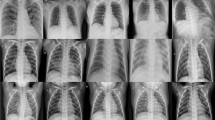Abstract
Numerous deaths have already occurred as a direct result of poor diagnosis procedures and COVID-19 diagnosis errors. The current work suggests deep learning (DL)-based classification approaches for recognising COVID-19 using patient chest X-rays (CHI). It is intended to utilise a deep learning (DL) assist computer-aided finding structure to divide X-ray descriptions into two groups: negative (0) and positive (1), in order to automatically discover COVID-19. The proposed study includes all three processes, including pre-processing, data collecting, and categorization. During pre-processing, distracting noise at the margins is removed. For feature extraction, U-NET-based models and Gaussian blur are used. On the collected features, two DL (DL)-based classifiers are applied: ResNet50 and Inception V3. The SARS-CoV-2 CT-scan (CTS) dataset is utilised to develop and assess COVID classification models. The proposed method was evaluated using a number of outcomes measuring criteria, including precision, recall, accuracy, and F-score. It was demonstrated that when U-NET-based segmentation and Gaussian blur were combined as features, the ResNet50 classifier outperformed the InceptionV3 classifier in terms of performance. The proposed system, using the ResNet50 classifier, surpassed the state-of-the-art COVID-19 classification on the test dataset, achieving 99% accuracy, 94% precision, 96% recall, and 95% F-score.
Access this chapter
Tax calculation will be finalised at checkout
Purchases are for personal use only
Similar content being viewed by others
References
G Pascarella A Strumia C Piliego F Bruno R Buono Del F Costa S Scarlata FE Agrò 2020 COVID-19 diagnosis and management: a comprehensive review J Intern Med 288 2 192 206
AM Ayalew AO Salau BT Abeje B Enyew 2022 Detection and classification of COVID-19 disease from X-ray images using convolutional neural networks and histogram of oriented gradients Biomed Signal Process Control 74 103530
Sethi R, Mehrotra M, Sethi D, Deep learning based diagnosis recommendation for COVID-19 using chest x-rays images. In: Second international conference on inventive research in computing applications (ICIRCA). IEEE, pp 1–4
D Yang C Martinez L Visuña H Khandhar C Bhatt J Carretero 2021 Detection and analysis of COVID-19 in medical images using deep learning techniques Sci Rep 11 19638 1 13
H Jiang S Tang W Liu Y Zhang 2021 Deep learning for COVID-19 chest CT (computed tomography) image analysis: a lesson from lung cancer Comput Struct Biotechnol J 9 1391 1399
Sadik R, Reza ML, Al Noman A, Al Mamun S, Kaiser MS, Rahman MA (2020) COVID-19 pandemic: a comparative prediction using machine learning. Int J Autom Artif Intell Mach Learn 1(1):1–16
Bejnordi BE, Veta M, van Diest PJ, van Ginneken B, Karssemeijer N, Litjens G, van der Laak JAWM, Hermsen M, Manson QF, Balkenhol M, Geessink O et al (2017) Diagnostic assessment of deep learning algorithms for detection of lymph node metastases in women with breast cancer. JAMA 318(22):2199–2210
J Amin M Sharif M Yasmin SL Fernandes 2018 Big data analysis for brain tumor detection: deep convolutional neural networks Futur Gener Comput Syst 87 290 297
Pastur-Romay LA, Cedrón F, Pazos A, Porto-Pazos AB (2016) Deep artificial neural networks and neuromorphic chips for big data analysis: pharmaceutical and bioinformatics applications. Int J Mol Sci 17(8):1313
Basu S, Mitra S, Saha N (2020) Deep learning for screening COVID-19 using chest x-ray images. In: 2020 IEEE Symposium series on computational intelligence (SSCI). IEEE, 2521–2527
A Narin C Kaya Z Pamuk 2021 Automatic detection of coronavirus disease (COVID-19) using X-ray images and deep convolutional neural networks Pattern Anal Appl 24 3 1207 1220
M Anthimopoulos S Christodoulidis L Ebner A Christe S Mougiakakou 2016 Lung pattern classification for interstitial lung diseases using a deep convolutional neural network IEEE Trans Med Imaging 35 5 1207 1216
Minaee S, Kafieh R, Sonka M, Yazdani S, Soufi GJ (2020) Deep-COVID: predicting COVID-19 from chest x-ray images using deep transfer learning. Med Image Anal 65:101794
Rajpurkar P et al (2017) CheXNet: radiologist-level pneumonia detection on chest x-rays with deep learning. arXiv:1711.05225 [cs.CV], arXiv:1711.05225v3 [cs.CV], https://doi.org/10.48550/arXiv.1711.05225
E Luz 2022 Towards an effective and efficient deep learning model for COVID-19 patterns detection in x-ray images Res Biomed Eng 38 1 149 162
Shan F et al (2020) Lung infection quantification of COVID-19 in CT images with deep learning. arXiv:2003.04655 [cs.CV], arXiv:2003.04655v3 [cs.CV], https://doi.org/10.48550/arXiv.2003.04655
Hemdan EE-D, Shouman MA, Karar ME (2020) COVIDX-Net: A framework of deep learning classifiers to diagnose COVID-19 in x-ray images. arXiv:2003.11055 [eess.IV], arXiv:2003.11055v1 [eess.IV], https://doi.org/10.48550/arXiv.2003.11055
Simonyan K, Zisserman A (2014) Very deep convolutional networks for large-scale image recognition. arXiv:1409.1556 [cs.CV], arXiv:1409.1556v6 [cs.CV], https://doi.org/10.48550/arXiv.1409.1556
D Wang J Mo G Zhou L Xu Y Liu 2020 An efficient mixture of deep and machine learning models for COVID-19 diagnosis in chest X-ray images PLoS ONE 15 11 e0242535
Soares E, Angelov P, Biaso S, Froes MH, Abe DK (2020) SARS-CoV-2 CT-scan dataset: a large dataset of real patients CTS scans for SARS-CoV-2 identification. In: medRxiv preprint, pp 1–8
Xu X et al (2020) A deep learning system to screen coronavirus disease 2019 pneumonia. Engineering 6(10):1122–1129
Wang S et al (2021) A deep learning algorithm using CT images to screen for Corona virus disease (COVID-19). Eur Radiol 31(8):6096–6104
Barstugan M, Ozkaya U, Ozturk S (2020) Coronavirus (COVID-19) classification using CT images by machine learning methods. arXiv:2003.09424 [cs.CV], arXiv:2003.09424v1 [cs.CV], https://doi.org/10.48550/arXiv.2003.09424
Author information
Authors and Affiliations
Corresponding author
Editor information
Editors and Affiliations
Rights and permissions
Copyright information
© 2023 The Author(s), under exclusive license to Springer Nature Singapore Pte Ltd.
About this paper
Cite this paper
Joshi, D., Patel, R., Joshi, A., Maretha, D. (2023). COVID-19 Disease Classification Using DL Architectures. In: Sharma, S., Subudhi, B., Sahu, U.K. (eds) Intelligent Control, Robotics, and Industrial Automation. RCAAI 2022. Lecture Notes in Electrical Engineering, vol 1066. Springer, Singapore. https://doi.org/10.1007/978-981-99-4634-1_74
Download citation
DOI: https://doi.org/10.1007/978-981-99-4634-1_74
Published:
Publisher Name: Springer, Singapore
Print ISBN: 978-981-99-4633-4
Online ISBN: 978-981-99-4634-1
eBook Packages: Intelligent Technologies and RoboticsIntelligent Technologies and Robotics (R0)




